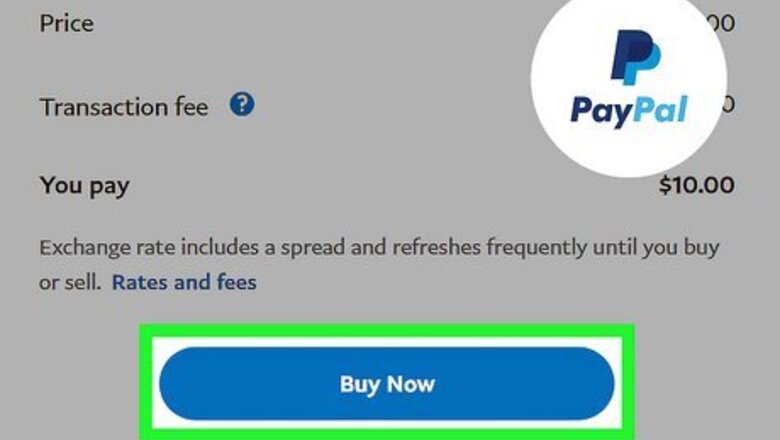
views
- The easiest way to buy Bitcoin is to use a digital payment app like Cash App, PayPal, or Venmo.
- A cryptocurrency exchange makes it easy to trade cash for Bitcoin and other tokens and can also serve as a digital wallet.
- You can also store Bitcoin in a separate cryptocurrency wallet. Wallets can be mobile apps, on the web, on hardware devices, and even on paper.
Using Payment Apps
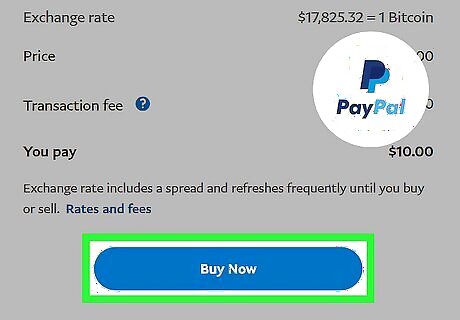
PayPal. If you have a PayPal account, buying Bitcoin is simple. Just tap the Finances icon in the PayPal app, tap Crypto, and select Bitcoin > Buy. Enter the amount you want to purchase (you can use your balance, linked bank account, or debit card), and follow the on-screen instructions to complete your payment. Once you've bought Bitcoin, you can store it in your PayPal account, keep track of its price, and sell it for cash at any time. You can also use your Bitcoin to shop anywhere that accepts PayPal at checkout. PayPal charges a small fee for Bitcoin purchases, ranging from $0.49 (for sales under $4.99) to 1.8% (purchases between $200.01 and $1000). If you prefer to keep your bitcoins in a cryptocurrency wallet, you can send them from PayPal to your wallet's Bitcoin address.
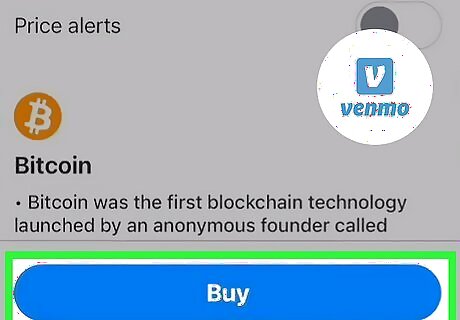
Venmo. Like its big sibling PayPal, Venmo also makes it easy to purchase Bitcoin using your balance, debit card, or bank account. Unlike PayPal, you can't use Bitcoin to make purchases in Venmo—but you can buy, sell, send, and receive Bitcoins from within the app. To buy, just tap the Crypto tab, select Bitcoin, enter the amount, and follow the on-screen instructions to process your payment. You can then store your Bitcoin in Venmo or transfer it to another wallet. Venmo's fees are identical to PayPal's, ranging from $0.49 (for purchases under $4.99) to 1.80% (for purchases from $200.01 to $1000).
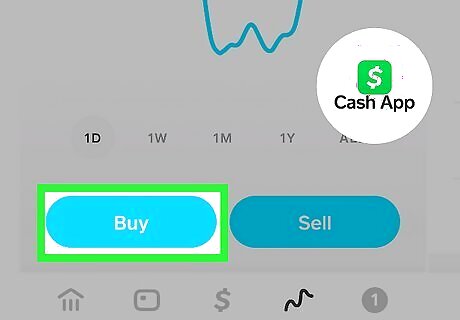
Cash App. If you want a way to buy Bitcoin easily from your phone or tablet but also want to dabble in cryptocurrency trading, Cash App is for you. Not only can you buy Bitcoin and other cryptocurrencies using your Cash App balance, you can also place advanced orders, such as buying Bitcoin only when it hits a certain price. To buy Bitcoin in Cash App, tap the Bitcoin tab, select Buy BTC, choose an amount, and then follow the on-screen instructions to purchase. Cash App does charge a fee to purchase Bitcoin, which usually ranges from 1% to 2%. The fee varies depending on market conditions. Before you confirm your purchase, you'll see the fee amount. You can also send and receive Bitcoin from Cash App, as well as invest a certain percentage of each paycheck automatically.
Using Stock Trading Apps
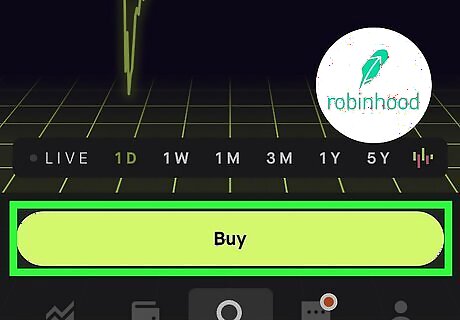
Robinhood. Because buying and selling Bitcoin is so similar to trading stocks, it fits in perfectly on Robinhood. Known as the app that made buying stocks more accessible to the average person, Robinhood allows you to buy and sell Bitcoin and other cryptocurrencies by placing market, limit, stop, and stop limit orders. If that sounds too confusing, don't worry. If you just want to buy some Bitcoin to hang onto, just tap the magnifying glass and go to Crypto > Bitcoin > Buy, enter the amount you want to purchase, select Market Order if not already selected, and then confirm your purchase. While it wasn't possible to do for a while, you can now transfer Bitcoin out of Robinhood to any address. Robinhood does not charge fees for buying and selling Bitcoin and other cryptocurrencies.
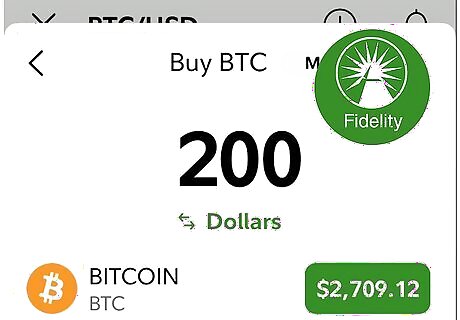
Fidelity. If you have a Fidelity account for your stocks and other investments, you can use the Fidelity Investments mobile app to buy and sell Bitcoin. Like Robinhood, you can use Fidelity to place both market and limit orders, sell, send, and receive Bitcoin in the app. To buy Bitcoin, select Bitcoin from the list of cryptocurrencies, choose your preferred order type, enter the amount you want to buy, and then follow the on-screen instructions to place your order. There won't be a separate fee to buy Bitcoin on Fidelity, but the service does add a spread of up to 1% to the total cost of the order, which inflates the price.
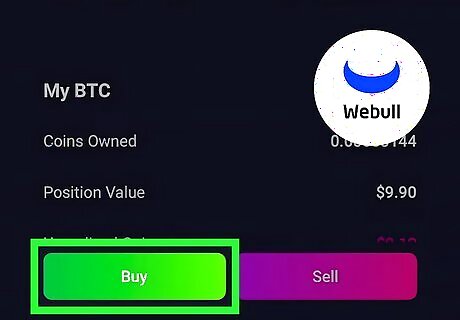
Webull. Webull doesn't have the name recognition of big apps like Fidelity and Robinhood, but that doesn't mean it's not a great place to buy Bitcoin and other cryptocurrencies. This growing app supports stocks, cryptocurrency, options, and more, lets you place both market and limit orders, and is very user-friendly. However, unlike its competitors, you can't transfer your Bitcoin to another wallet or person—it has to stay in Webull. To buy Bitcoin on Webull, go to Markets > Crypto, select Bitcoin, choose your funding source, and then place your order. Webull collects fees by applying a 100bps markup (1%) to each Bitcoin purchase. This inflates the price of the Bitcoin just enough to cover that amount without charging you a separate fee. Once you sign up for Webull, you'll need to tap the menu icon and select Crypto Trading to request a cryptocurrency account. Once approved, add money to your Webull account, go to the Market tab, then go to Crypto > Bitcoin.
Using an Exchange
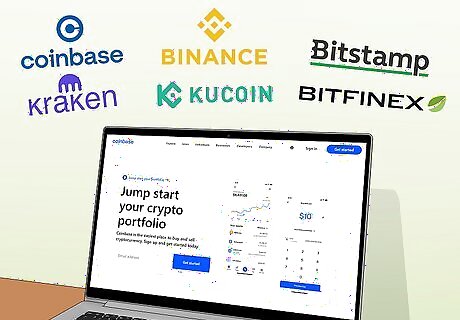
Choose an exchange. Buying Bitcoin through a centralized cryptocurrency exchange is a great option, especially if you're interested in trading other cryptocurrencies in a user-friendly setting. A cryptocurrency exchange works like any other currency exchange: You register, deposit your region's currency, and then trade it for Bitcoin. Exchanges also let you trade Bitcoin for other cryptocurrencies and send and receive them from your wallet. Centralized exchanges are a good option if you want to engage in regular trading and don’t need total anonymity. Choosing the best exchange depends on where you are located and the type of currency you want to use to buy Bitcoin. Some of the more well-known exchange services include Coinbase, Kraken, Binance, Kucoin, Bitstamp, and Bitfinex. Some exchanges do not allow fiat (your regional currency) deposits. For example, if you want to use a decentralized exchange, you'll need another type of cryptocurrency to trade for Bitcoin instead of your region's currency. If you want to buy Bitcoin with your bank account, debit card, or credit card, avoid "crypto-only" exchanges.
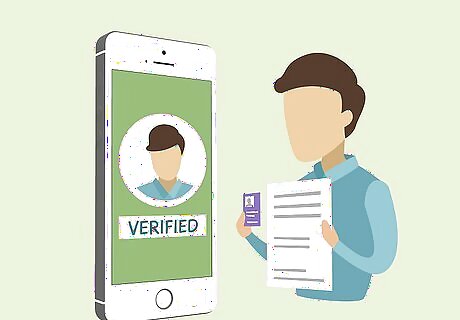
Verify your account. To use a centralized exchange, you'll need to provide proof of identity to the service—a process known as KYC (Know Your Customer) designed to meet anti-money laundering requirements. This process usually involves taking a photo of yourself holding up a sheet of paper that says the exchange's name and the date or sometimes holding up your identification. You'll also need to scan your government ID. Though you must provide proof of your identity, exchanges do not provide the same protection that banks do. You are not protected against hackers or given reimbursement if the exchange goes out of business.
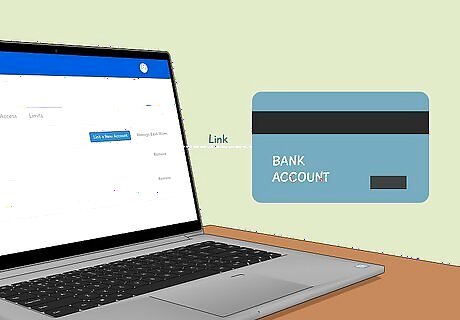
Connect a payment method. You'll need to deposit some cash to buy Bitcoin on an exchange. Most exchanges make it easy to link your bank account or debit card to transfer funds easily, while others only accept wire transfers. Follow your exchange's instructions to fund your account.
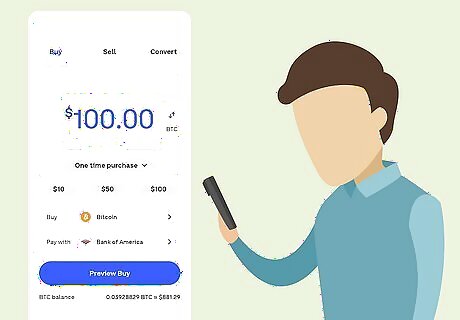
Buy Bitcoin. Some exchanges, like Coinbase and Crypto.com, allow you to simply click or tap Bitcoin, enter an amount, and instantly make a purchase. Other exchanges are more like stock exchanges, where instead of choosing what you want and paying for it, you'll need to examine the charts and place a market or limit order. Either way, once you place your order, your Bitcoin will be deposited into your exchange wallet. Centralized exchanges store your Bitcoin and fiat currency for you online so you can trade, sell, send, and receive Bitcoin and other tokens. However, most experts agree that you should send your Bitcoin to a non-custodial wallet rather than leaving your Bitcoin on an exchange—just in case the exchange goes bankrupt.
Using Bitcoin ATMs
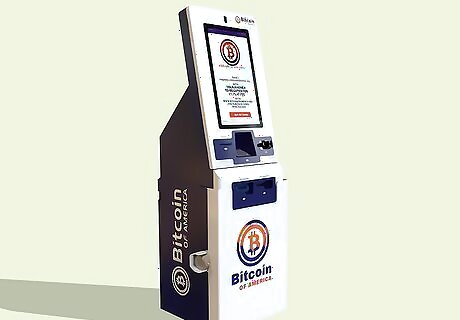
Find a Bitcoin ATM near you. Now that Bitcoin is growing more popular, you can buy it at Bitcoin-specific ATMs. You'll often find these kiosks at malls, airports, universities, and convenience stores. To find the closest Bitcoin ATM, visit https://coinatmradar.com and enter your address. While these ATMs initially allowed you to stay anonymous when buying Bitcoin, most now require you to provide identification—many even require you to scan your government ID. At the very least, you'll need to provide your phone number at most Bitcoin ATMs. If you haven't already created a Bitcoin wallet, you'll need to do so before using a Bitcoin ATM.
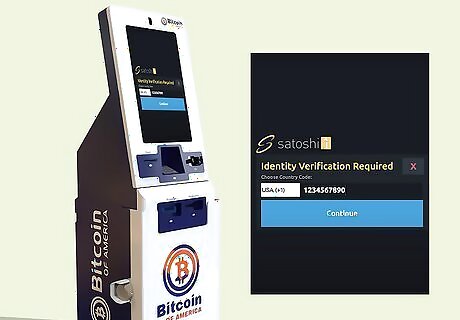
Sign in to the Bitcoin ATM with your phone number. To get started at most Bitcoin ATMs, you'll usually need to enter your phone number to verify your identity. Once you do this, you may be prompted to provide additional information.
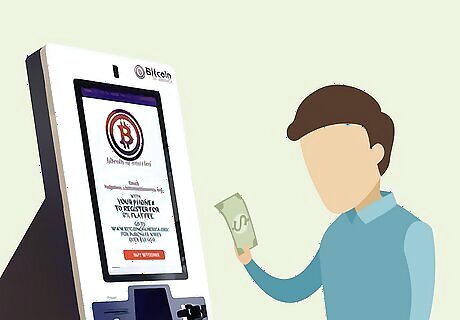
Withdraw out cash from your bank account. Most Bitcoin ATMs only accept cash, as they are not set up to process debit or credit card transactions.
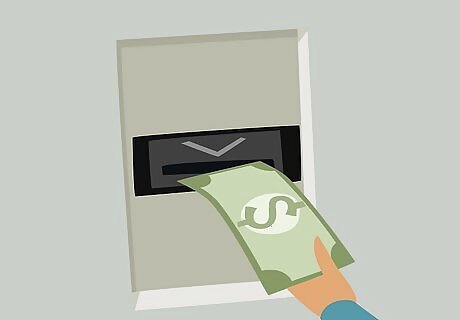
Insert your cash into the ATM. Then, scan your mobile wallet QR code or access the codes needed from your account via your smartphone to load bitcoins onto your wallet. Exchange rates at Bitcoin ATMS can vary from 3% to 8% on top of the standard exchange price.
Buying Peer-to-Peer
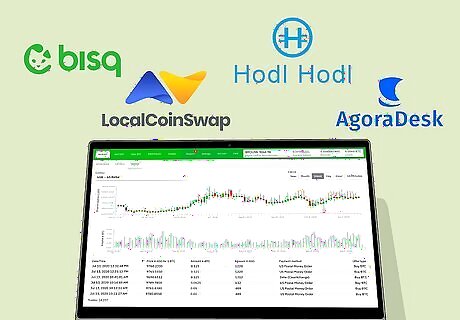
Peer-to-peer Bitcoin transactions allow you to stay truly anonymous. Unlike traditional exchanges, peer-to-peer exchanges allow users to trade cryptocurrencies with one another without providing any personal information. Some popular peer-to-peer exchanges are Bisq, Local Coin Swap, Hodl Hodl, and AgoraDesk. You can also buy Bitcoin from someone in person. When you buy Bitcoins directly from another person, you'll need to give them your wallet address and payment in exchange for the agreed-upon amount. Just be careful about meeting random people who claim to be selling Bitcoin online, and always make sure the coins have been transferred into your wallet before paying the seller. You can check the current Bitcoin exchange rates online at https://www.coingecko.com.
How to Store Your Bitcoin
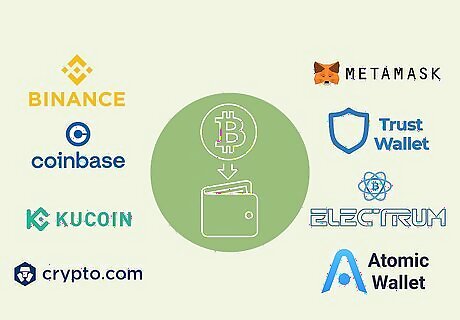
Create a Bitcoin wallet. If you buy Bitcoin through a service like Robinhood, PayPal, or Cash App, you don't have to create a separate wallet. But if you buy Bitcoins on an exchange, through a Bitcoin ATM, or via a person-to-person transaction, you'll want a Bitcoin wallet to store your private keys. There are two types of wallets: Custodial wallets: When you use a custodial wallet, you're storing your private keys on a remote server run by a third party. These wallets are usually offered by cryptocurrency exchanges like Binance, Coinbase, Kucoin, and Crypto.com. You can think of using a custodial wallet like depositing cash into a bank account. However, because Bitcoin is not insured like most banks, you risk losing your Bitcoin if the wallet provider goes bankrupt. Non-custodial wallets: With this type of wallet, you store the keys for your Bitcoin on your device, such as your computer, phone, tablet, hardware wallet, or even a paper wallet. Non-custodial wallets include MetaMask, Trust Wallet, Electrum, Atomic Wallet, and hardware devices like Trezor and Ledger.
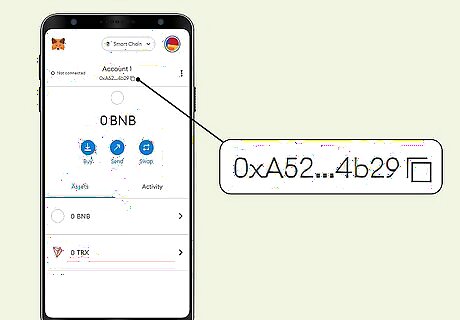
Get your wallet address. If you create a wallet that isn't on a cryptocurrency exchange, you'll need access to your Bitcoin address to receive the Bitcoin you purchase. Look for a "Receive" or "Deposit" link in your Bitcoin wallet to find the long series of characters that make up your wallet address. When buying Bitcoin at a Bitcoin ATM, from a person directly, or on a decentralized exchange, you must provide this address during your purchase. If you want to buy Bitcoin at Bitcoin ATMs, consider a Bitcoin wallet that supports deposits using a QR code like Electrum, Trust Wallet, or Coinbase Wallet. Don't trust any online Bitcoin QR code generators, which are often scam sites.
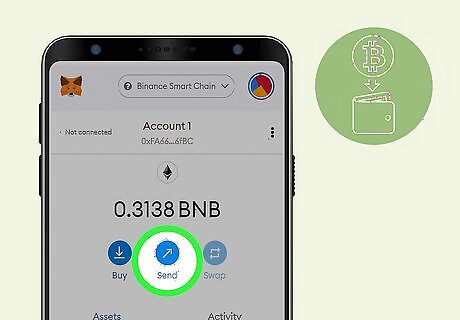
Send Bitcoin to your wallet. While some wallets have a built-in method to buy Bitcoin from their app or website, most just act as a holding place for your tokens. Once you purchase Bitcoin on an exchange or in a finance app, look for the "send," "transfer," or "withdraw" option, and enter your Bitcoin wallet address. If you're using a Bitcoin ATM, you can usually scan your wallet's QR code for a quick transfer.
Advantages and Disadvantages
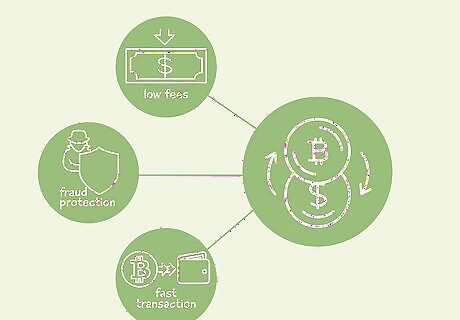
Advantages. Low fees: Unlike traditional finance systems, whereby the system itself (like PayPal or a bank) is compensated with a fee, Bitcoin bypasses this entire system. The Bitcoin network is maintained by the "miners," who are compensated with new Bitcoin. Protection against fraud: Because Bitcoin is digital, it cannot be counterfeited, which protects against payment fraud. In addition, transactions cannot be reversed by credit card chargebacks. Immediate transfer and settlement. Traditionally, when money is transferred, it involves significant delays, holds, or other hassles. The lack of a third party means that Bitcoin can be transferred directly between people without the complexities, delays, and fees associated with purchasing between parties using different currencies and providers.
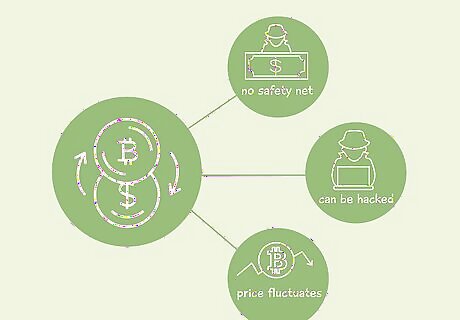
Disadvantages. Financial safety. With traditional banking, if someone makes a fraudulent transaction on your credit card or your bank goes belly-up, there are laws in place to limit your losses. Unlike banks, Bitcoin does not have a safety net in place if your Bitcoins are lost or stolen. There is no intermediary power to reimburse you for lost or stolen Bitcoins. Security. Bitcoin is not immune to hackers, and the average Bitcoin account is not completely secured against hacking or security breaches. Price volatility. The price of Bitcoin in dollars fluctuates wildly, often with no rhyme or reason. A bad news cycle could tank your investment. In addition, because Bitcoin's value is determined by supply and demand, should Bitcoin end up being subject to government regulation in any form, it could reduce the amount of people who want to use Bitcoin, which could theoretically make the currency worthless.




















Comments
0 comment